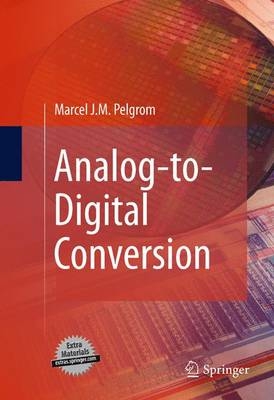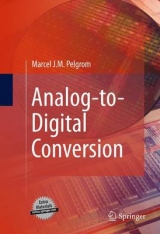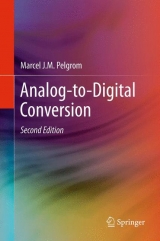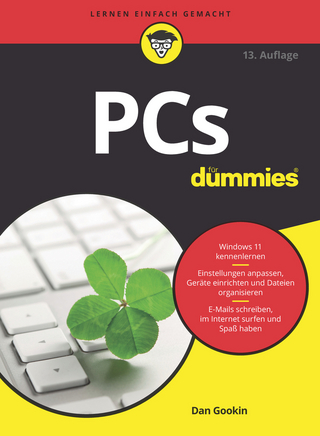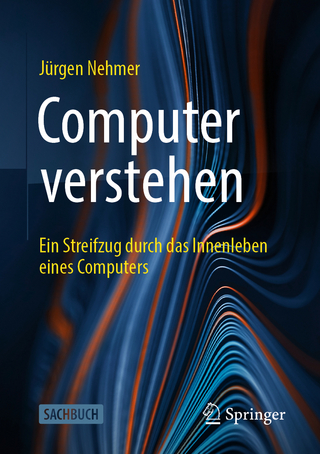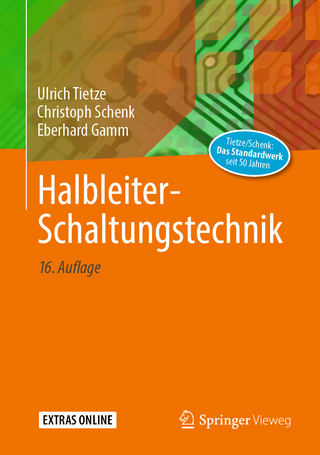Analog-to-digital Conversion
Springer (Verlag)
978-90-481-8887-1 (ISBN)
- Titel erscheint in neuer Auflage
- Artikel merken
The design of an analog-to-digital converter or digital-to-analog converter is one of the most fascinating tasks in micro-electronics. In a converter the analog world with all its intricacies meets the realm of the formal digital abstraction. Both disciplines must be understood for an optimum conversion solution. In a converter also system challenges meet technology opportunities. Modern systems rely on analog-to-digital converters as an essential part of the complex chain to access the physical world. And processors need the ultimate performance of digital-to-analog converters to present the results of their complex algorithms. The same progress in CMOS technology that enables these VLSI digital systems creates new challenges for analog-to-digital converters: lower signal swings, less power and variability issues. Last but not least, the analog-to-digital converter must follow the cost reduction trend. These changing boundary conditions require micro-electronics engineers to consider their design choices for every new design.
Analog-to-Digital Conversion discusses the different analog-to-digital conversion principles: sampling, quantization, reference generation, nyquist architectures and sigma-delta modulation. It also presents an overview of the state-of-the-art in this field and focuses on issues of optimizing accuracy and speed while reducing the power level. A lot of background knowledge and practical tips complement the discussion of basic principles, which makes Analog-to-Digital Conversion also a reference for the experienced engineer.
Preface. List of symbols. Reference tables and figures. 1 Introduction. 2 Components and definitions; 2.1 Mathematical tools; 2.2 Resistivity; 2.3 Maxwell equations; 2.4 Semiconductors; 2.5 The MOS transistor; 2.6 Network theory; 2.7 Electronic circuits. 3 Sampling; 3.1 Sampling in time and frequency; 3.2 Time-discrete filtering. 4 Sample and hold; 4.1 Track-and-hold and sample-and-hold circuits; 4.2 Artifacts; 4.3 Capacitor and switch implementations; 4.4 Track-and-hold circuit topologies. 5 Quantization; 5.1 Linearity; 5.2 The quantization error; 5.3 Signal-to-noise. 6 Reference circuits; 6.1 General requirements; 6.2 Bandgap reference circuits; 6.3 Alternative references. 7 Digital-to-analog conversion; 7.1 Unary and binary representation; 7.2 Digital-to-analog conversion schemes; 7.3 Accuracy; 7.4 Methods to improve accuracy; 7.5 Digital-to-analog conversion: implementation examples. 8 Analog-to-digital conversion; 8.1 The comparator; 8.2 Full-flash converters; 8.3 Sub-ranging methods; 8.4 Pipeline converters; 8.5 1.5 bit pipeline analog-to-digital converter; 8.6 Successive approximation converters; 8.7 Linear approximation converters; 8.8 Time-interleaving time-discrete circuits; 8.9 An implementation example; 8.10 Other conversion ideas. 9 Sigma-delta modulation; 9.1 Oversampling; 9.2 Noise shaping; 9.3 Sigma-delta modulation; 9.4 Time-discrete sigma-delta modulation; 9.5 Time-continuous Sigma-delta modulation; 9.6 Multi-bit sigma-delta conversion; 9.7 Various forms of sigma-delta modulation. 10 Characterization and specification; 10.1 The test hardware; 10.2 Measurement methods; 10.3 Self testing. 11 Technology; 11.1 Technology roadmap; 11.2 Variability: an overview; 11.3 Deterministic offsets; 11.4 Random matching; 11.5 Consequences for design; 11.6 Packaging; 11.7 Substrate Noise. 12 System aspects of conversion; 12.1 System aspects; 12.2 Comparing converters; 12.3 Limits of conversion. Excercises. Bibliography. Index.
| Zusatzinfo | black & white illustrations |
|---|---|
| Verlagsort | Dordrecht |
| Sprache | englisch |
| Maße | 156 x 234 mm |
| Gewicht | 1850 g |
| Einbandart | gebunden |
| Themenwelt | Mathematik / Informatik ► Informatik ► Netzwerke |
| Informatik ► Weitere Themen ► Hardware | |
| Naturwissenschaften ► Chemie ► Analytische Chemie | |
| Naturwissenschaften ► Physik / Astronomie ► Festkörperphysik | |
| Technik ► Elektrotechnik / Energietechnik | |
| ISBN-10 | 90-481-8887-3 / 9048188873 |
| ISBN-13 | 978-90-481-8887-1 / 9789048188871 |
| Zustand | Neuware |
| Haben Sie eine Frage zum Produkt? |
aus dem Bereich
